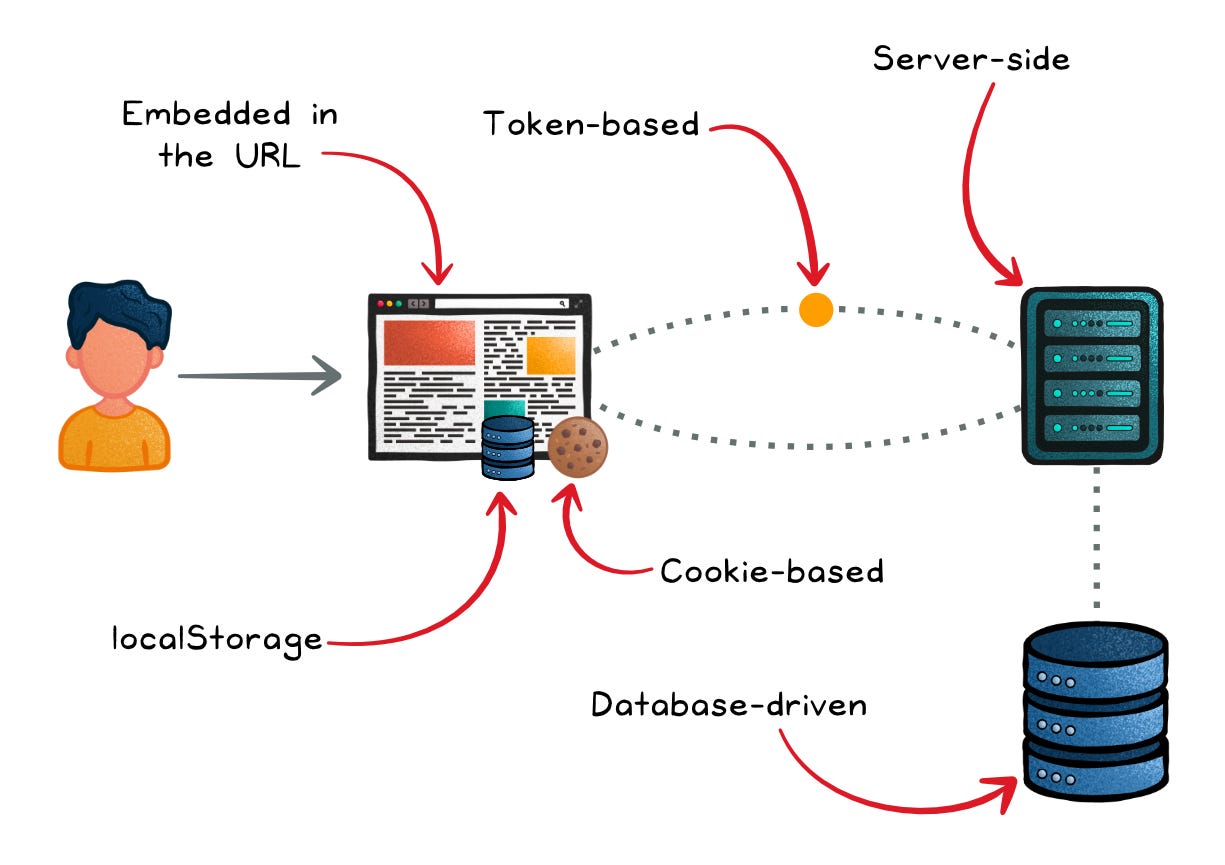Session Management Demystified: Cookies, Tokens, and Security
(5 Minutes) | Unpacking Session Management
Get our Architecture Patterns Playbook for FREE on newsletter signup:
Presented by Postman
How can we automate the health and performance of our APIs?
Postman Monitors is a great way to do this.
How Session Management Powers Secure Interactions
Imagine having to reintroduce yourself every time you speak to someone.
Tiresome, isn't it?
Our applications experience the same dilemma. They need a way to recognize the users interacting with them.
This is where session management steps in.
Session Management is the process of securely handling multiple requests to a web-based application from a single user or entity.
Essentially, it’s the process of recognizing users across multiple requests on web applications, ensuring that interactions can flow without constant reintroductions.
Why is it Important?
There are two primary reasons that session management is a fundamental component of web applications; maintaining user state, and security.
HTTP is a stateless protocol, meaning each request from a client to a server is treated as a new, standalone request with no memory of previous interactions.
Session management provides a way to retain user-specific data across multiple requests.
As for security, proper session management ensures that the user is who they say they are throughout the session's lifespan, providing protection against unauthorized access, CSRF attacks, session hijacking, and more.
The Mechanics Behind the Scenes
There are several techniques for implementing session management, however, some are more secure than others.
Today, we'll be covering the three most prominent techniques throughout the industry, all of which are considered to be highly secure approaches.
Cookies
Cookies are small pieces of data sent from a server and stored on a user's web browser while the user is browsing. They are the most common session management tool.
Upon a successful login, the server sends a unique session ID in a cookie. With each subsequent request, the browser sends this cookie, reminding the server that they've met before.
Token-based Management
With the rise of single page applications (SPAs), mobile apps, and distributed systems where maintaining state on the server can be challenging and inefficient, modern applications have embraced tokens.
Post-login, the server dispatches a signed token, often in the form of a JSON Web Token (JWT), to the client.
The client then stores the token, often in a cookie.
The token then accompanies each request, usually in the HTTP headers, acting as proof of the user's identity.
Server-side Management
On the other side of the coin, we have server-side session management.
It’s a more traditional approach where the session state is maintained on the server. Whether in databases, in-memory storages, or file systems, session data resides securely server-side.
The client, in this scenario, only holds a unique identifier, rather than the session state being stored on the client.
Server-side management has been the standard approach for many years and is still highly prevalent, particularly in legacy systems and certain types of applications.
However, with the architectural trends of the past decade, token-based management has become the most common approach in modern applications and systems.
Session management, though often operating in the background, stands as a cornerstone in ensuring the fluidity and security of our applications and systems. Proper session management not only plays a role in creating smooth user experiences. In an era marked by cyber threats, it’s a major pillar of keeping our applications and systems secure.
Subscribe to get simple-to-understand, visual, and engaging system design articles straight to your inbox:



